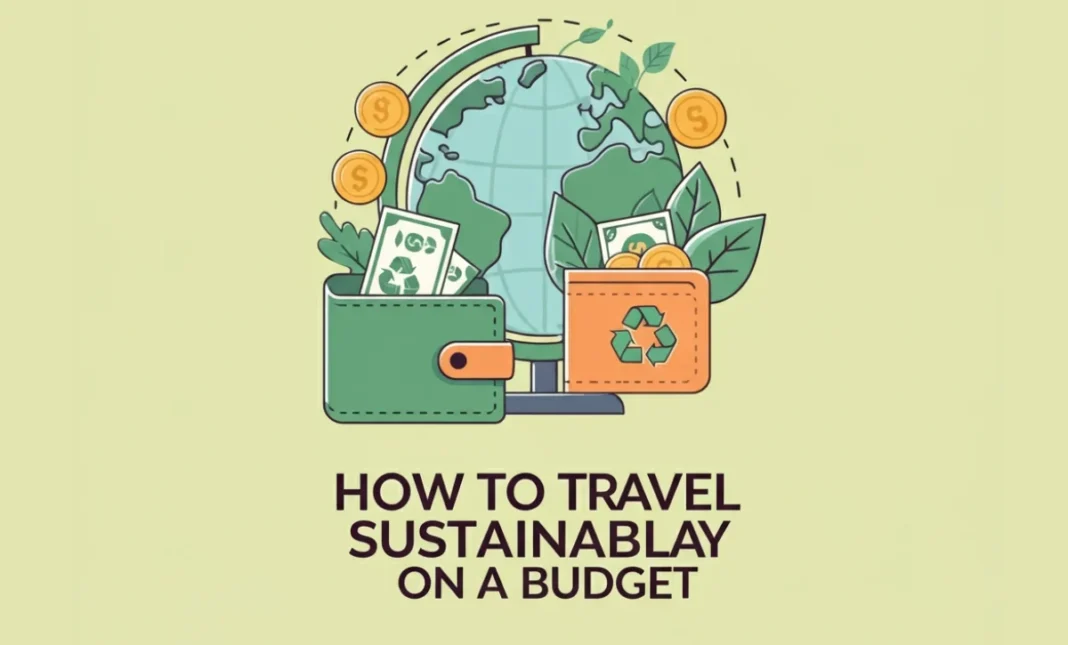Ever wondered if you can see the world, make a difference, and still stick to a budget? The good news is, traveling sustainably doesn’t have to cost a fortune. In fact, some of the best travel experiences come from making thoughtful choices about where you go, how you get there, and how you spend your money. As more of us try to be conscious of our footprint, learning how to travel sustainably on a budget becomes both an exciting challenge and a rewarding way to explore.
In this guide, we’ll walk through simple, practical tips for low-impact travel that are easy on both the planet and your wallet. Whether you’re planning for a weekend city escape or a months-long adventure, these strategies help you make responsible choices from booking to packing.
Choosing Eco-Friendly Transportation
How you get to your destination plays a huge role in your travel impact. Planes get us places faster, but they use a lot more fuel than many other options. Whenever you can, look into public transport options such as trains or buses—they’re usually more sustainable and affordable.
For more information on the environmental impact of travel choices, check out the Sustainable Travel Tips from National Geographic.
Go by Land
Trains and buses often cost less and let you soak in the scenery along the way. Traveling by land can open up more genuine connections with locals, spontaneous detours, and a slower, richer experience. Plus, your carbon footprint stays lower.
Fly Smarter
If a plane is your only real option, there are still ways to travel responsibly. Choose direct flights and pack light—it reduces emissions and saves airlines on energy. Some airlines also make extra effort to use newer, more efficient planes, so check out their sustainability policies before you book.
Finding Sustainable and Affordable Accommodations
Your choice of where to sleep at night directly affects the communities you visit and the planet. The trick is to skip large chains and find lodging that gives back to local economies or has a clear eco-friendly focus.
- Book Eco-Friendly Spots: Look for places that use solar power, recycle, or offer shared facilities. Many booking sites even have filters to help you track down certified eco-friendly stays.
- Support Small Businesses: Guesthouses, homestays, and family-run B&Bs often offer a cozier, more personal experience—and your money goes further in the local community.
- House-Sit or Volunteer: Not only do you get free accommodation, but you also connect with locals, care for pets, or even join in meaningful projects.
If you want to find certified sustainable lodgings worldwide, use the Green Key eco-label search tool.
Eating and Shopping Like a Local
Nothing helps you understand a new place quite like its food. When you eat at small restaurants or shop at local markets, you get a delicious and affordable meal while supporting regional farmers and businesses.
Savor Local Cuisine
Choose street food or dine where locals eat for the best and most budget-friendly options. This is the flavor of real life, and every dollar you spend goes to people who live and work there—plus, fewer food miles means less impact on the planet.
Packing Light and Reducing Waste
It’s tempting to pack for every situation, but traveling light is better for you and the environment. Thoughtful packing means less hassle, fewer luggage fees, and less waste along the way.
- Reusable Water Bottle: Save money and stay hydrated by carrying a refillable bottle—especially useful in places where you can refill safely.
- Tote Bag for Shopping: Avoid plastic bags when shopping by bringing a lightweight reusable bag. It’s a small item that makes a big difference.
- Solid Toiletries: Shampoo or soap bars are long-lasting, spill-proof, and reduce your plastic use.
Engaging in Mindful and Ethical Activities
The best parts of any adventure usually don’t cost much and leave a positive impact. Think cultural exchanges, hikes in nature, and guided community tours.
Support Community-Based Tourism
Whenever possible, book tours with local guides or join community-led experiences. These tours are built by people who know and love their home, ensuring that your money stays in the community and you get genuine insights you can’t find in guidebooks.
Conclusion: Small Steps, Big Impact
You don’t need to splurge to travel meaningfully, and you don’t have to be perfect, either. What matters is making informed, thoughtful choices—taking public transportation, eating local, packing smart—that add up over time. Learning how to travel sustainably on a budget is all about balance, intention, and enjoying the journey.
Frequently Asked Questions (FAQs)
1. Is sustainable travel always more expensive?
Not at all. Using public transport, eating from local markets, and staying in guesthouses usually cost much less than luxury options—and are better for the planet too.
2. How can I offset my carbon footprint from flying?
Calculate your flight emissions with an online tool, and support reputable projects that protect forests or build clean energy. It’s not a perfect solution, but every effort helps.
3. What’s the most important thing to pack for sustainable travel?
A sturdy reusable water bottle tops the list. You save money, avoid waste, and keep hydrated throughout your trip.
4. How do I find ethical wildlife tours?
Look for companies that clearly outline their animal welfare policies and don’t let you touch or ride wildlife. Read reviews and trust tour operators that prioritize education and conservation.
5. Can one person really make a difference?
Yes! Every choice sends a message—when travelers show there’s a demand for responsible tourism, businesses begin to change for the better.
You may also read : Santa Clarita Valley Water Agency Voting Guide 2023
